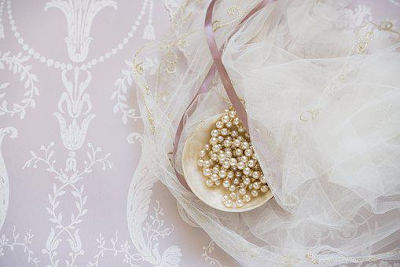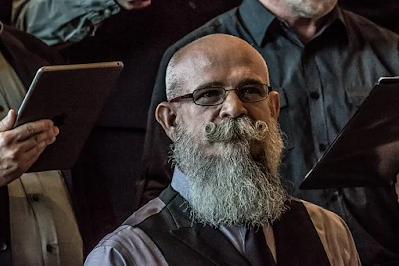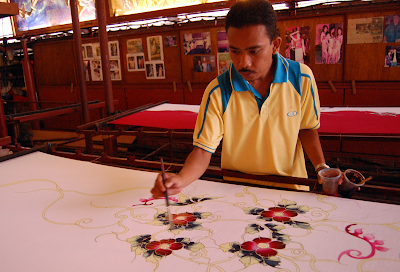Featured
- Get link
- X
- Other Apps
HISTORY OF INDIGENOUS PEOPLES' DRESS IN NORTH AMERICA
The aboriginal peoples of North America have a wide range of cultures, languages, and ecological adaptations to their various locations.
This diversity is reflected in their clothing.
Prior to European contact, the sole consistency in their attire was the use of animal skins, most notably the tanned skins of a range of big North American mammals such as buffalo or bison, antelope, mountain sheep, caribou, and others.
Deer was the most common because of its extensive geographic spread.
Smaller animals like mink, beaver, and rabbit were employed as well, although more for ornamental purposes.
Native peoples in certain locations developed textile apparel technologies that mostly employed fibers derived from gathered plant items and sometimes spun thread manufactured from both domesticated and slain or caught wild animals' hair.
Weaved items were worn from head to toe by tribes from Alaska to the southwest, including the Plateau, Great Basin, and California tribes, as well as the Mexican border.
Plant-based materials were used to make hats, capes, blouses, skirts, and even footwear.
This practice mirrored the negative impacts of the coastal temperate rain forest climate on skin goods in the north, and it was mostly owing to the paucity or rarity of big animals for skins in the south.
Several Great Basin tribes, for example, developed a method of weaving strips of tiny animal skins (such as rabbits) into blankets or shawls in order to optimize available resources.
Paints, porcupine quills, and stripped bird feather shafts were the principal ornamental decorations to garments before to contact.
Many cultures utilized whole feathers from a variety of birds, with feathers from great raptors, particularly the eagle, symbolizing pride and holy power.
Both the additive pieces and the main body of the clothing were colored using dyes and paints.
These coloring chemicals were sourced from plant and mineral sources, and some locations had very complex systems in place for producing various colors from the local flora.
Paints made from regional mineral outcrop pings, as well as these goods, were popular trading commodities.
Jewelry—bracelets, earrings, combs, and hair ornaments—and, to a lesser degree, garment ornaments—were made of bone and shell.
The coveted shimmering abalone shells and the tapering conical dentalia shells that resembled miniature elephant tusks were traded from California and the more northerly Pacific Coast to the Great Plains and beyond, with the coveted shimmering abalone shells and the tapering conical dentalia shells that resembled miniature elephant tusks being traded from the Great Plains and beyond to the Great Lakes region.
Shells from the Gulf of Mexico, as well as jewelry made from them, were sold up river trade routes to the Northern Plains, Midwest, and Great Lakes regions.
The beads cut from Atlantic shells, subsequently known to early European settlers as "wampum," were also distributed by a large net work.
The sole evidence of metallurgy north of Mexico was among the Mississippi and Ohio valley's so-called Mound Builders, who mined copper mostly on Lake Superior's islands and sold it south to be fashioned into jewelry and other decorations.
Exploitation of comparable "native copper" deposits on the Pacific Northwest Coast enabled the virtually pure copper product to be utilized as jewelry, knives, and other implements.
The one-of-a-kind metal shieldlike artifacts manufactured were a pure display of riches, representing prestige and rank among the Northwest Coast's "Potlatch People." The availability of resources in the Pacific coastal region led to widespread use of diverse plant sources for clothing; in the north, humans depended on evergreen root and inner-bark fibers, as well as sedges, grasses, and ferns, from Alaska to Northern California.
The material from grasses and other smaller plants predominates when the rain forest climate loses place to marshy habitats and grassy savannas towards the south.
Nonetheless, this local region produced some of humanity's greatest basketry items, and a wide range of basket-woven materials were utilized as clothing.
The inhabitants of the western coast were provided with large rain hats, caps, various types of capes and wraps, gowns, kilts, leggings, and even shoes to meet their various demands.
People in the dry Southwest and Great Basin woven garments as well, albeit to a lesser extent and with more skin products.
Cotton, which had been cultivated in Mesoamerica and traded north with chiles, maize, and squashes as part of an agricultural diffusion, was grown by certain sedentary cultures.
Cotton mantas, or women's garments, were made by the Hopi, as were sashes and kilts for males.
In this civilization, the males weaved their own clothing pieces, which was unusual.
Men wore a belt and breechclout combination throughout the Southwest in general, while women wore a skirt or kilt or a garment that covered the full body, depending on the tribe.
A garment of skin tanned with the hair on, of locally procured deer, antelope, sheep, or trade-obtained bison, provided additional warmth during the winter months.
Also worn were woven rabbit-skin robes.
Footwear that could withstand a harsh, rocky environment as well as the thorny plants of the desert climate became more important.
The Inuit (previously known as Eskimo) in the extreme north, the Arctic cultural region, often used skins treated specifically with the fur maintained in such a manner as to cope bat the freezing temperature.
In harsh cold, fitted fur garments featured hoods that were bordered with special species of fur to minimize the production of frost around the edge owing to moisture condensation from exhaled air.
Some species' skins were employed for particular qualities in various portions of the garment, while other elements of the garment were carefully engineered as well.
Seal was chosen for its water resistance, whereas caribou was chosen for its insulative properties.
To offer insulation and protection, dried grasses or mosses were placed inside sealskin-soled mukluks or boots with formed soles.
The skins of diverse animals were also utilized in ornamental design, with differing tailoring indicating distinct cultural groupings and gender identification.
Furthermore, coastal groups developed waterproof clothing made of finely stitched seal intestine that allowed sea hunters to venture out on frigid Arctic waters, allowing them to secure themselves in their one-man kayaks in a leak-proof manner, when the intrusion of frigid seawater could have meant death for both the kayaker and those he was providing for.
The Athapaskan and Northern Algonquin, referring to the next cultural region south in the interior of the continent, similarly fashioned their garments to protect them from the dangers of the northern cold.
Ironically, the dangers of thawing ground sometimes constituted a greater threat than the cold itself, and as a result, their clothing requirements differed from those of their northern neighbors.
The presence of porcupine and moose in the arboreal forest provided additional decorative options, enabling the use of quills and moose hair as overlay and embroidery motifs.
Eastern Woodlands Indians used quill and hair in embroidery and appliqué to embellish their clothes.
Even inland tribes were able to receive trade beads and shaped goods created by coastal cultures from the plentiful shellfish coverings.
Deer skins were the most often used for clothing since they were the most prevalent huge animal.
Breechclouts, deer-skin leggings with each end tucked into a belt, were the standard for males, while full skirts were the norm for women.
In the woodland regions, moccasins tended to be soft-soled, made of tanned deer, moose, or caribou hide, and smoked over a smoldering fire to help in moisture resistance before being chopped up for the shoe's construction.
Warmth was provided by deer-hide garments during the colder months.
Some tribes in the region developed a textile culture utilizing fibers from collected plants like stinging nettle, but it was mostly restricted to tiny products like pouches, purses, and sashes.
The Plains tribes, on the other hand, had almost little textile cultural past.
Furthermore, the Plains climate prompted a shift in footwear technology, with most tribes preferring a two-part moccasin with a tanned-skin vamp or top coupled to a thicker leather sole.
This was a reaction to the more bare ground surface and thorny flora, similar to the Southwest.
Because this region was home to the bulk of North America's buffalo or bison, they took on a significant role in Plains nations' civilizations.
This value is mirrored in clothing, with buffalo hide being a valuable material.
Winter garments of buffalo skin tanned with the hair on, especially among the northern tribes, were highly esteemed and frequently beautifully adorned.
To really appreciate their vast cultural variety, language variance, and apparel and deign of dress, one must study the estimated 565 functional native tribes in their right cultural settings in the early 2000s, in order to contradict the monolithic picture of the Native American.
The Culture Area notion, which has been around for a long time, is still relevant in postcolonial life.
Indigenous nations were organized inside these converging regions, mostly along the lines of material culture goods, such as among the Iroquois in the Northeast, where longhouses housed numerous families based on matrilineal clan connection.
Matrilocal living and inheritance via the female promoted a mixed hunting and farming economy, allowing a concentrate on seasonal celebrations such as the midwinter and harvest feasts.
In these and other rites, ceremonial-plaited maize husks and carved wood masks were utilized, typically in the context of healing.
Cut-shell bead stranded belts went beyond basic ornamentation, and were often made to memorialize particular occasions.
These wampum belts were used to maintain historical records.
Several extant belts, for example, chronicle treaties between native and European communities.
Any region may be chosen, and the attire and ornamentation of the people engaging with the environmental opportunity can be explained.
The inhabitants of the Northwest Coast spoke a variety of languages, but they all shared a dynamic cultural lifestyle centered on the opportunity for economic excess provided by the abundant marine environment.
The Haida of the Queen Charlotte Islands, off the coast of present-day British Columbia, Canada, had the most brilliant and exquisite de signs.
Monumental totem poles and adorned house villages, ceremonial masks, and the embellishment of practically every item type in the society, whether utilitarian or aesthetic, were all examples of their totemic art.
This desire to beautify was carried over to clothing, with masterful painting incorporating the same curvilinear stylized totemic themes on woven cedar bark hats and mats, as well as skin robes and tunics.
Chilkat blankets, made of mountain goat wool and cedar bark, were prized possessions of powerful people.
The conquerors forced all of North America's aboriginal peoples to adapt their culture.
Despite the official suppression of native beliefs, culture, and languages, they have adapted and altered to new lifestyles.
Many people dress in classic fashions that have been adapted to modern materials.
They dress in fresh ways that show off current designs.
Find Jai on Twitter | LinkedIn | Instagram
See also:
America, Central, and Mexico: History of Dress; Beads; Fur; Leather and Suede.
References And Further Reading:
Coe, Ralph T. Sacred Circles: Two Thousand Years of American Indian Art. London: Arts Council of Great Britain, 1972.
Howard, James H. “The Native American Image in Western Europe.” American Indian Quarterly 4, no. 1 (1978).
- Get link
- X
- Other Apps











